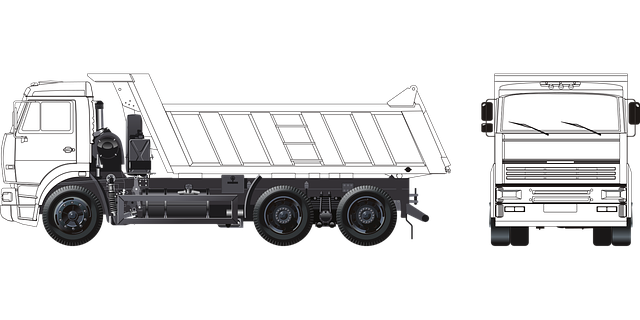Looking to register your car in California? This guide breaks down the process step-by-step, ensuring a smooth transition. First, understand the eligibility criteria for vehicle registration in the Golden State. Next, gather essential documents, including proof of ownership and insurance. Master the crucial DMV VIN verification process, where you’ll confirm your vehicle’s unique identifier. Then, complete the application, submit required fees, and receive your California Vehicle Registration Certificate.
- Understand Eligibility for Vehicle Registration in California
- Gather Necessary Documents for Car Registration
- Perform DMV VIN Verification Step-by-Step
- Complete Application and Submit Required Fees
- Receive Your California Vehicle Registration Certificate
Understand Eligibility for Vehicle Registration in California

To register your car in California, you must first ensure your vehicle meets the state’s eligibility requirements. One crucial aspect is that the car must be legally imported and comply with California’s safety and emissions standards. The Department of Motor Vehicles (DMV) conducts a thorough process called VIN verification to check these factors, including performing a history report search using the Vehicle Identification Number (VIN). This involves cross-referencing the VIN with various databases to confirm the vehicle’s authenticity, previous ownership, and any outstanding issues like theft or salvage titles.
Additionally, for vehicles over 15 years old, a safety inspection may be required during registration. You can opt for a traditional DMV inspection or consider convenient alternatives like mobile VIN verification and mobile VIN inspection services, which offer on-site convenience for added peace of mind. These services utilize advanced technology to streamline the process, making it easier for you to meet California’s registration criteria.
Gather Necessary Documents for Car Registration

Before you begin the car registration process in California, ensure you have all the essential documents ready. The Department of Motor Vehicles (DMV) requires a range of information to verify your vehicle’s ownership and identity. Among these, the Vehicle Identification Number (VIN) plays a crucial role, serving as a unique code that identifies your car. For convenience, many opt for a mobile vin inspection or vin inspection, allowing for on-site verification by a professional.
The process typically involves gathering documents such as the title of ownership, proof of insurance, and valid identification with your current address. Additionally, you’ll need to complete the DMV’s form for vehicle registration, which requires the VIN verification. This step is essential to ensure that your car meets all safety standards and regulations before it can be officially registered and permitted to drive on California roads.
Perform DMV VIN Verification Step-by-Step

Performing a DMV VIN (Vehicle Identification Number) verification is a crucial step in registering your car in California. Here’s how to do it step-by-step:
1. Gather Necessary Documents: Before heading to the DMV, ensure you have all required documents, including your vehicle’s registration certificate (if any), title, proof of insurance, and valid driver’s license. For a more convenient process, consider opting for a mobile vin inspection or vin inspection service that can assist with this step.
2. Visit the California DMV Website: Start by visiting the official California DMV website to access their online services. Here, you’ll find forms for various vehicle-related transactions, including VIN verification. Fill out the appropriate form, providing detailed information about your vehicle, such as make, model, year, and color. If you’re opting for a mobile vin verification, a professional will come to your location to complete this process.
Complete Application and Submit Required Fees

After gathering all necessary documents, it’s time to complete the application for vehicle registration with the DMV. The process involves filling out a Form SV-1, which requires accurate and up-to-date information about your car, including its make, model, year, and unique Vehicle Identification Number (VIN). This step is crucial as it initiates the official verification process, ensuring that your vehicle meets all legal standards before receiving California’s stamp of approval.
Along with submitting the application, you’ll need to pay the required fees. These costs include registration fees, title transfer charges, and potentially other taxes or surcharges. To streamline this process, some individuals opt for a mobile vin inspection service, allowing them to complete the vin inspection and fee payment from the comfort of their home. This modern approach, utilizing mobile vin verifier technology, further simplifies vehicle registration in California.
Receive Your California Vehicle Registration Certificate

After submitting your application and providing necessary documents, you’ll receive your California Vehicle Registration Certificate. This crucial document verifies that your vehicle is legally registered in the state. The process often involves a DMV (Department of Motor Vehicles) vin verification, ensuring the accuracy of the vehicle’s identification number (VIN). This step is essential to maintain the integrity of California’s vehicle registration system.
A mobile vin verification service can streamline this process by allowing you to complete the VIN inspection from the comfort of your location. These services utilize advanced technology to confirm the VIN details with the DMV, making it a convenient and efficient way to receive your certificate promptly.
Registering a car in California involves understanding eligibility requirements, gathering essential documents, and successfully completing the DMV VIN verification process. By following these steps and providing all necessary information, you’ll be on your way to obtaining your California vehicle registration certificate efficiently. Remember, proper registration ensures your vehicle complies with state laws and allows for smooth operation on California roads.
